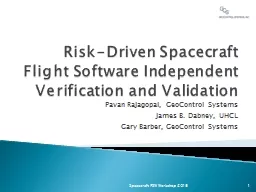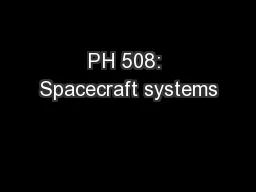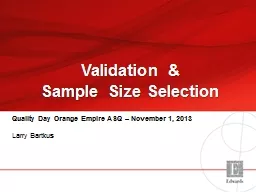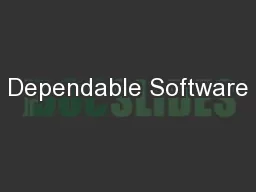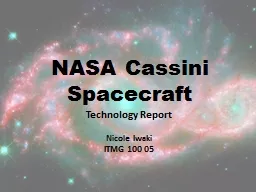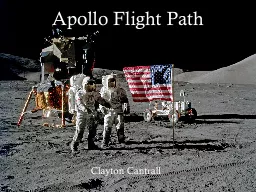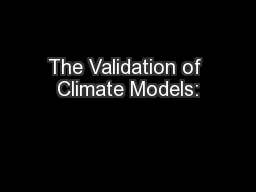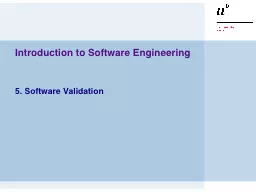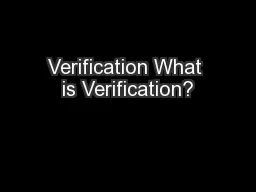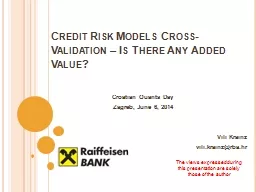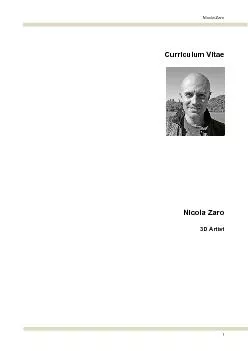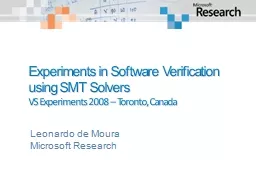PPT-Risk-Driven Spacecraft Flight Software Independent Verification and Validation
Author : lois-ondreau | Published Date : 2018-12-15
Pavan Rajagopal GeoControl Systems James B Dabney UHCL Gary Barber GeoControl Systems 1 Spacecraft FSW Workshop 2015 Objectives of Work IVampV Background Importance
Presentation Embed Code
Download Presentation
Download Presentation The PPT/PDF document "Risk-Driven Spacecraft Flight Software I..." is the property of its rightful owner. Permission is granted to download and print the materials on this website for personal, non-commercial use only, and to display it on your personal computer provided you do not modify the materials and that you retain all copyright notices contained in the materials. By downloading content from our website, you accept the terms of this agreement.
Risk-Driven Spacecraft Flight Software Independent Verification and Validation: Transcript
Pavan Rajagopal GeoControl Systems James B Dabney UHCL Gary Barber GeoControl Systems 1 Spacecraft FSW Workshop 2015 Objectives of Work IVampV Background Importance of early defect identification. P. rimary . A. rcing on . S. olar . C. ells . A. t . L. EO (PASCAL) Flight Experiment. Justin J. Likar. 1. , Teppei Okumura. 2. , . Shunsuke. Iwai. 3. , . Philip Jenkins. 4. , . Mengu. Cho. 5. ,. . ECE . 7502 Class Discussion . B. en Calhoun. Thursday January 22, 2015. Requirements. Specification. Architecture. Logic / Circuits. Physical Design. Fabrication. Manufacturing Test. Packaging Test. PCB Test. Thermal balance and control.. Introduction [See F&S, Chapter 11]. We will look at how a spacecraft gets heated. How it might dissipate/generate heat. The reasons why you want a temperature stable environment within the spacecraft.. Larry Bartkus . Validation &. Sample Size Selection. Verification and Validation. Verification:. Confirmation by examination and provision of objective evidence that the specified requirements have been fulfilled. Verlässliche Software. Logiciel fiable. 9.5. Dr. . . Jean-Charles Tournier. CERN, Geneva, Switzerland. Industrial Automation. Automation Industrielle. Industrielle Automation. The material of this course has been initially created by Prof. Dr. H. . Technology Report. Nicole Iwaki. ITMG 100 05. What is the Cassini Spacecraft?. O. ngoing project by the National Aeronautics and Space Administration. Launch date on October 15th, 1997. It’s mission is to conduct detailed studies of Saturn, its rings, icy satellites, magnetosphere and Titan.. Clayton . Cantrall. Lunar Orbit Rendezvous Concept (LOR). One of three concepts considered for Apollo 11 mission. Direct . Ascent, Earth Orbit Rendezvous, . LOR. LOR . was eventually chosen due to its advantages of less fuel, less technological innovation, and small lunar . The Development of Essential Practice. Richard B. Rood. University of Michigan. Wunderground.com. NOAA, ESRL, 29 February 2012. Deep Background. As a manager at NASA . I felt a responsibility to deliver a series of model products addressing a specific set of scientific capabilities, on time, on budget.. 5. Software . Validation. © Oscar Nierstrasz. ESE — Software Validation. ESE 5.. 2. Roadmap. Reliability, Failures and Faults. Fault Avoidance . Fault Tolerance. Verification and Validation. The Testing process. Verification is confirmation of eligibility for free and reduced price meals under NSLP and SBP. . Verification is . not . required for CEP schools or DC students. . Verification activities begin on Oct. 1 and must be concluded by November. Verification Tracking Flag. 2016-2017. 2017-2018. V1. Standard Verification Group. Standard Verification Group. V4. Custom Verification (HS Completion, Identity, SNAP, Child Support Paid). Croatian Quants Day. Zagreb, June 6, 2014. Vili Krainz. vili.krainz@rba.hr. The views expressed during this presentation are solely . those of the author. Introduction. Credit risk – . The risk that one party to a financial contract will not perform the obligation partially or entirely. of CompletionThis certificate is awarded to Nicola Zarofor successful completion of 40-hoursVXL-301 Exterior Day and Night Renderingtraining course date: 06.11.2015 V-Ray Training Center Instructor ID VS Experiments 2008 . –. Toronto, Canada. Leonardo de Moura. Microsoft Research. Agenda. What is SMT?. Experiments:. Windows kernel verification.. Extending SMT solvers.. Garbage collector (Singularity) verification.
Download Document
Here is the link to download the presentation.
"Risk-Driven Spacecraft Flight Software Independent Verification and Validation"The content belongs to its owner. You may download and print it for personal use, without modification, and keep all copyright notices. By downloading, you agree to these terms.
Related Documents

